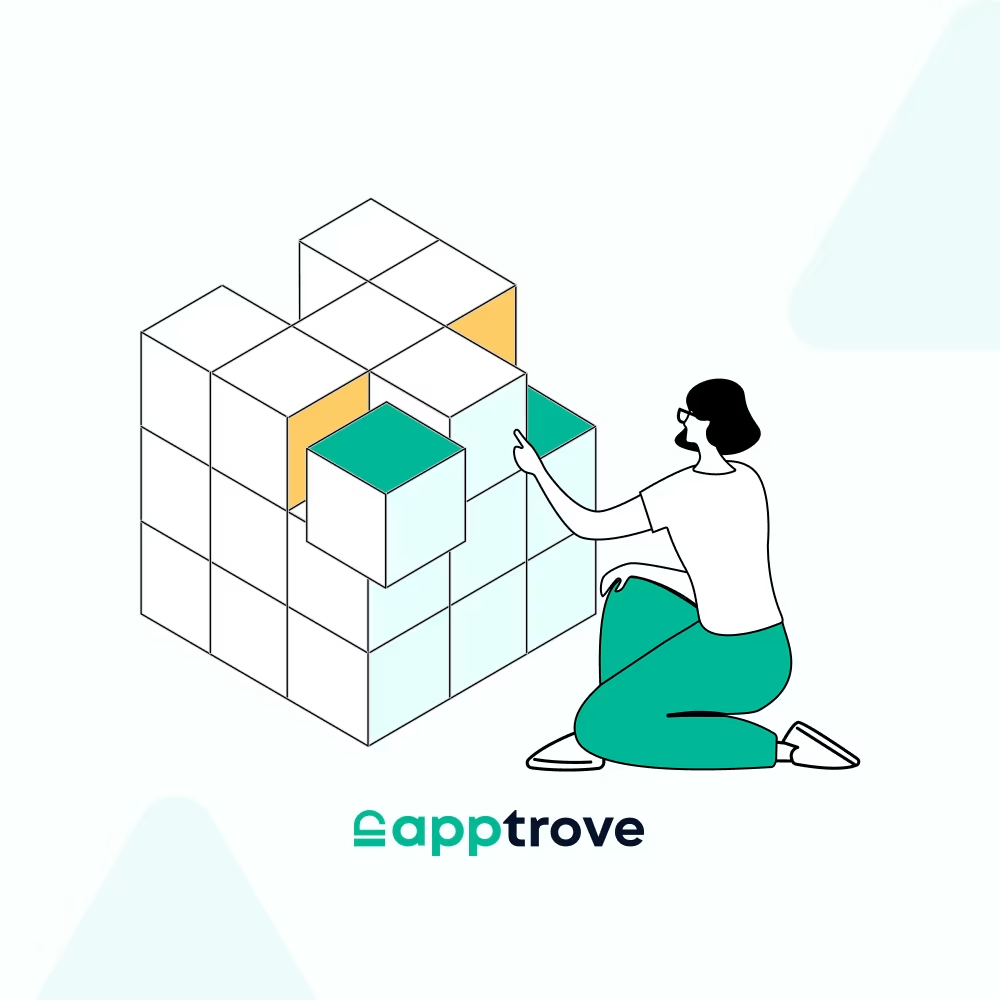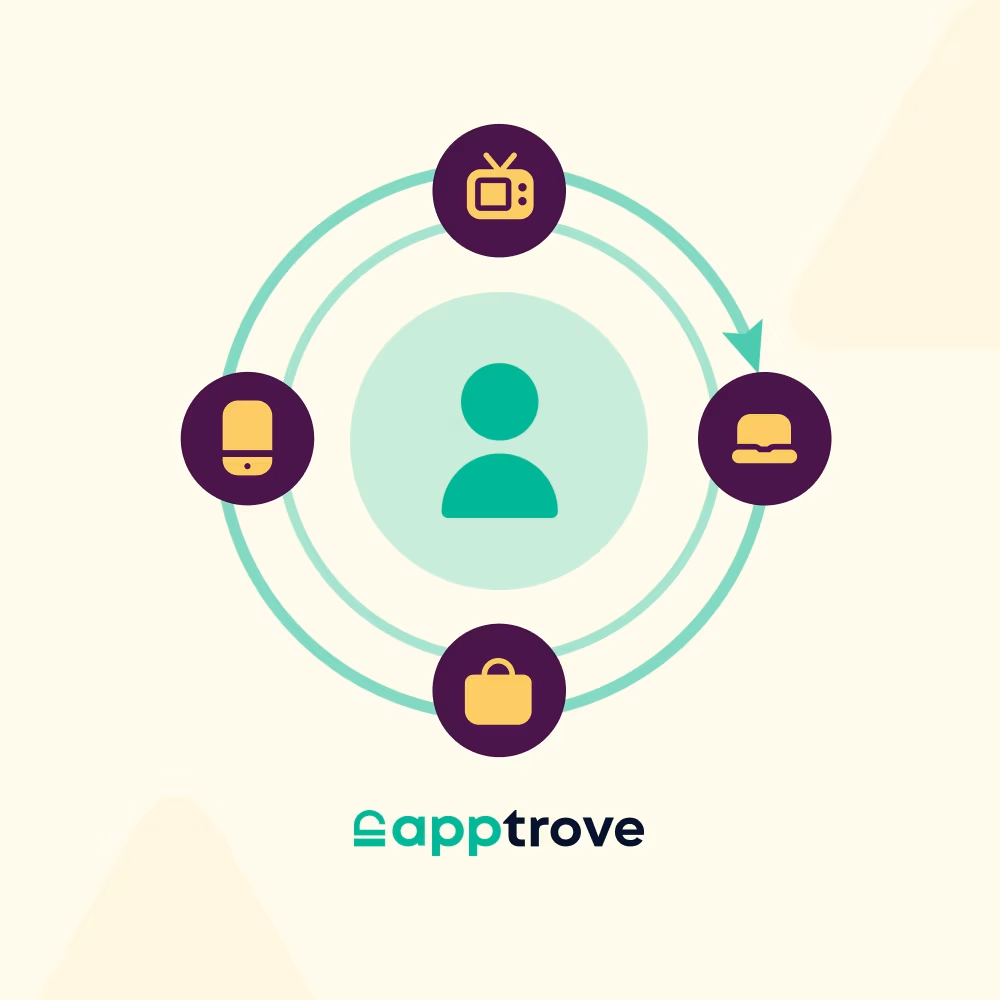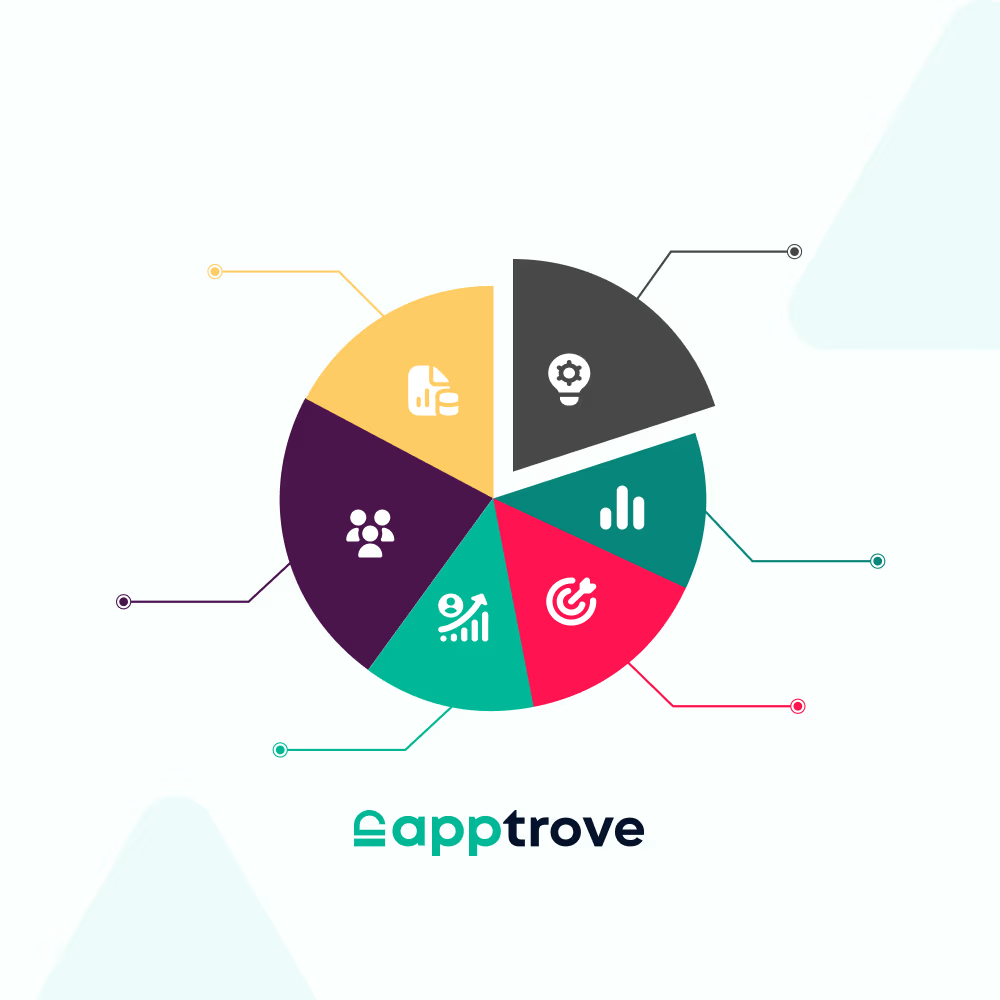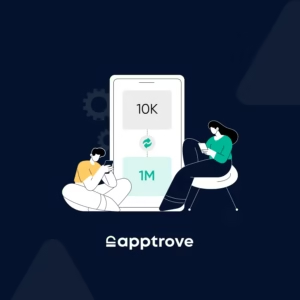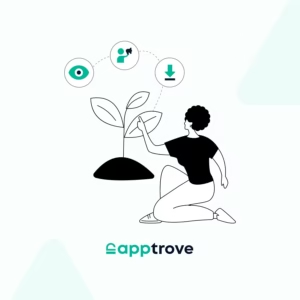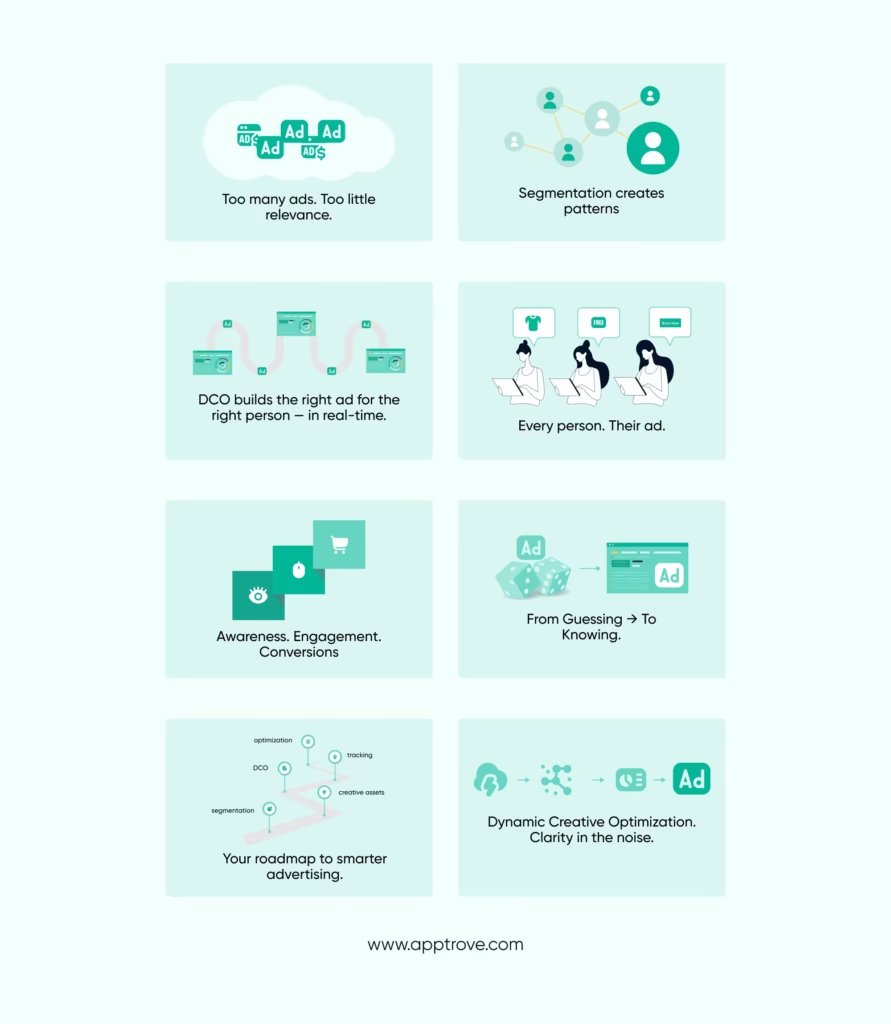
Marketers have evolved their thinking about personalization from being a performance luxury to being the backbone of modern advertising. People are inundated with countless messages from varied platforms and when confronted with those messages, generic ads rarely leave an impression. Relevance cuts through the noise and is expressed through content that feels like it was designed specifically for the end user. And segments are the first step in this process. When you segment your audience into meaningful groups based on their behaviors, attitudes, or context, it sharpens your campaigns. Instead of messages for a one-size-fits-all approach, you can create experiences that speak to audience behaviors, attitudes, and context.
Dynamic Creative Optimization (DCO) takes this process to the next level. Dynamic Creative Optimization is the combustion engine of turning segmentation into performance by using DCO to revolutionize standard ad creatives. DCO recognizes that most ads represent a one-size-fits-all approach; Dynamic Creative Optimization can assemble the most relevant version of ad creative for each user, in real-time, by dynamically assembling copy, images, and calls-to-action, meaning that every user will see a version of an ad creative that is most likely to spur engagement. In fact, campaigns using dynamic creative optimization have reported click-through rates up to 257% higher and conversion rates around 40% higher compared to static creative campaigns.
The real beauty of Dynamic Creative Optimization lies in leveraging highly tailored segments to create ads that compel users not only to do something but to perform an action. This delivers ads that not only generate awareness but also lead to user engagement (higher engagement), bring positive outcomes (higher conversion rates), and create efficiencies in spend.
For marketers like you, the emergence of DCO signifies a watershed moment. Dynamic Creative Optimization represents a move away from the guesswork formerly used with creative testing to a framework in which your segmentation data can drive creative performance. Think of being able to serve different ad messages to two people who are viewing the same platform – based on their intent, and stage in the journey. This is the real power in combining segmentation and DCO.
This guide’s purpose is to help you harness that power. In the next sections, you’re going to learn what Dynamic Creative Optimization actually means in practice, why segmentation is the foundation of that, and how to create ad creatives that are dynamic in real-time. You’ll learn how to implement Dynamic Creative Optimization, track the results, and envision where the performance creative is going. Whether you’re managing a current campaign or building from the ground up, this guide will give you a clear, actionable plan to better, more effective advertising.
What is Dynamic Creative Optimization and Why is it Important?
Dynamic Creative Optimization (DCO) refers to the process by which the most relevant version of an ad is assembled and served to the viewer automatically. Rather than serving every user the same static message, Dynamic Creative Optimization relies on a combination of creative assets-image, headline, call-to-action, offer, etc.- to most effectively connect to that viewer in real time.
To highlight why Dynamic Creative Optimization is important, we can take a look at a static ad. The static creative is static- once it is designed and launched, every user is served the same unit- regardless of intention, behavior, or context. While these types of campaigns can generate awareness, they don’t provide the precision that is required to actually connect with audiences. Dynamic Creative Optimization, on the other hand, represents the ability to adapt. DCO is designed to take user data, campaign objectives, and segment insights, and turn these items into individual experiences at scale.
This is where segmentation becomes critical. By breaking your audience down into relevant segments—like first-time visitors, loyal users, hot shoppers—you lay the groundwork for personalization. Dynamic Creative Optimization uses segmentation data to choose which creative variation to serve, and when you combine segmentation with automation, you never have to create and test every possible version of an ad again; the system accrues performance signals to optimise for delivery constantly while doing its best to ensure users only see the segmented version of the ad.
What I find remarkable about this process is its balance of segmentation, automation and personalization. The segmentation tells you the “who”, the automation tells you the “how”, and personalization tells you the “what”. So segmentation, automation and personalization become a cycle that enables the ads to become not only more efficient but also significantly more relevant to the people exposed to the ad.
The advantages are evident. DCO makes a significant improvement to relevance, as the user is being served ads that match their needs/interests in the moment. That relevance creates more engagement, as audiences are more likely to click, browse and convert when the creative feels especially relevant. Dynamic Creative Optimization also delivers measurable increases in ROI. Instead of spreading your budget over a set of generic ads, you are funding a system that reacts to user behavior and optimizes every impression.
However, the meaning of DCO is elevated when you understand the size of digital advertising today. Global digital advertising spending is projected to surpass 740 billion U.S. dollars by 2028, according to Statista, creating strong motivation for marketers to continually optimize campaign efficiency and relevance.. Without Dynamic Creative Optimization, so much of this spend is at risk of being wasted on irrelevant impressions.
In a nutshell, Dynamic Creative Optimization matters because it makes sure your ads are not only being seen but that they are being seen by the right people, in the right way, at the right time. For you as a marketer, that means the difference between just managing campaigns and actually managing campaigns that work.
How Segmentation Drives Performance Creative
Segmentation is the engine of personalization and without it, Dynamic Creative Optimization (DCO) cannot reach its full potential. At its core, segmentation simply means grouping your audience together into relevant categories based on similarities in behaviors, or demographics, or context. Segmentation opposes the concept of treating everyone identically, anticipating that every user experience is different and your proposition must reflect this difference.
When segmentation is central to your approach, the opportunity for performance creative is realized. Performance creative is no longer a message sent to ‘all of your audience’ with the hope it sticks; rather, performance creative is about getting the right creative to the right segment, at the right time. This is where personalization in advertising resides, highlighting the fact that segmentation is often referred to as the ‘fuel’ for performance creative.
Types of Segmentation in Application
There are a variety of means to segment an audience, but three kinds of segmentation are relevant in terms of Dynamic Creative Optimization:
1. Behavioral segmentation considers the actions an audience has taken, e.g. did the audience browse the product pages without making a purchase? Did they abandon the shopping cart? Did the user engage with the content repeatedly? Behavioral information offers indicators of intent that can be actioned with the right creative – e.g., you can put together an ad retargeting the abandoned cart audience with a discount.
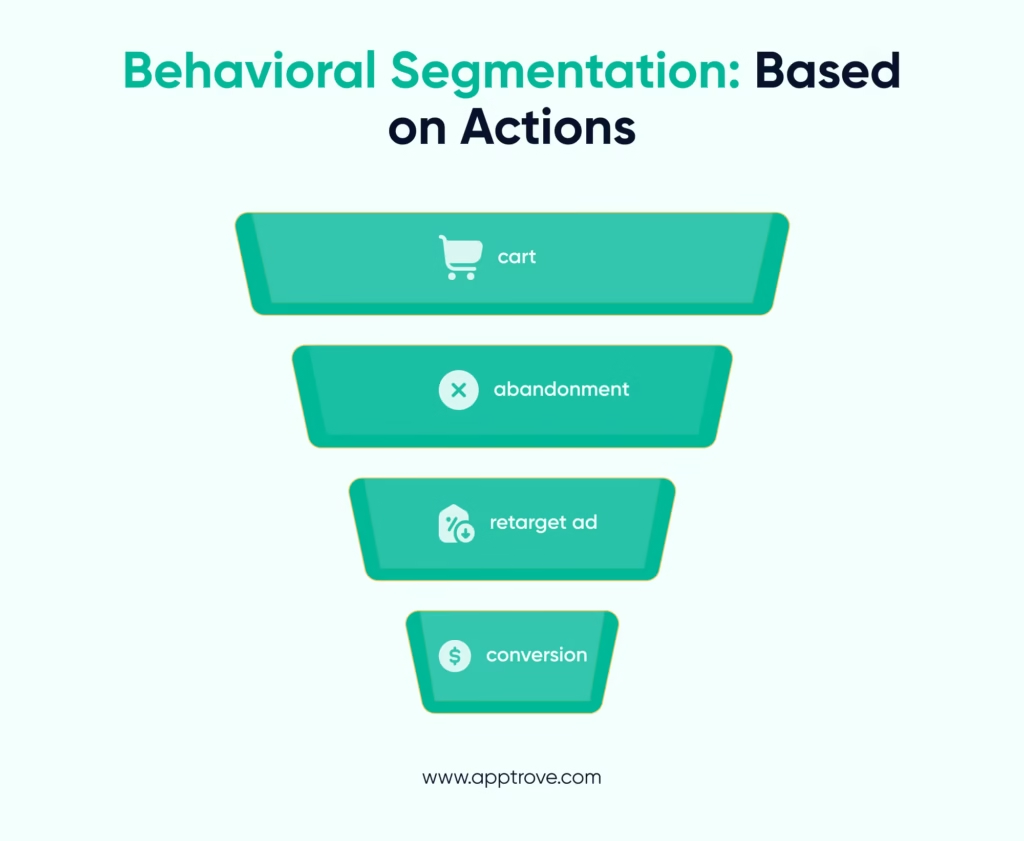
2. Demographic segmentation looks at attributes of the audience such as age, gender, income level, education, etc. While broader than behavioral data, demographic information can offer insight to develop creatives to target the lifestyle or life stage of your users. For example, a fitness app may have very different creatives for college students when compared to working professionals.
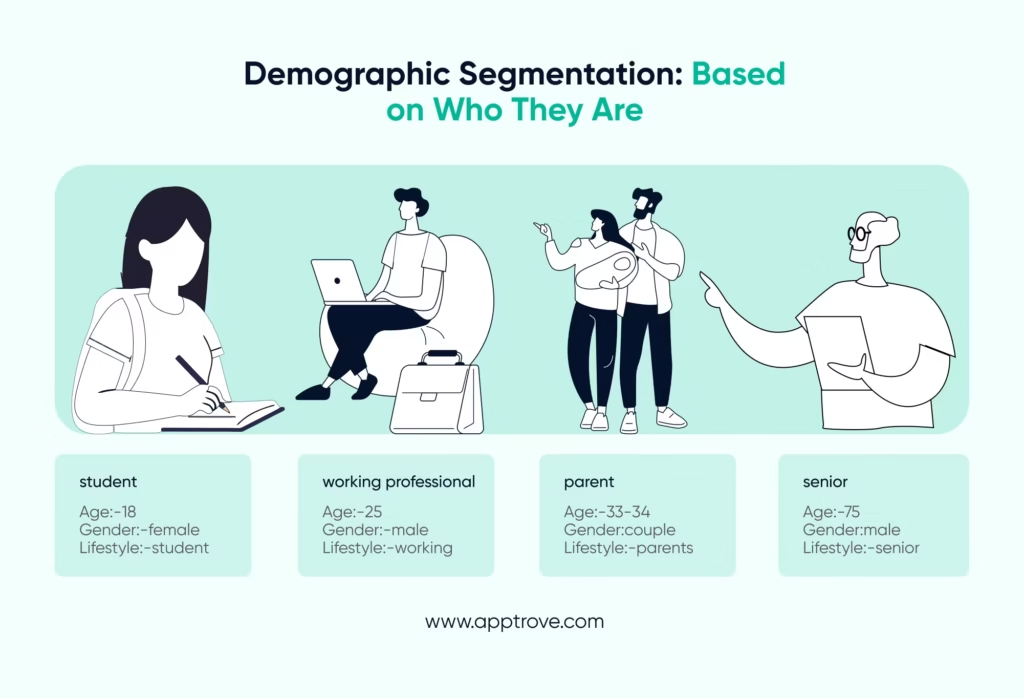
3. Contextual segmentation utilizes the context surrounding the user viewing the ad. Context can be defined as device type, location, or even time of day. Serving a lunch deal ad, for example, at noon rather than midnight is a very different ad and its impact will differ greatly. The very definition of contextual cues makes perfect sense as an indicator for creativity to align with the proper moment.
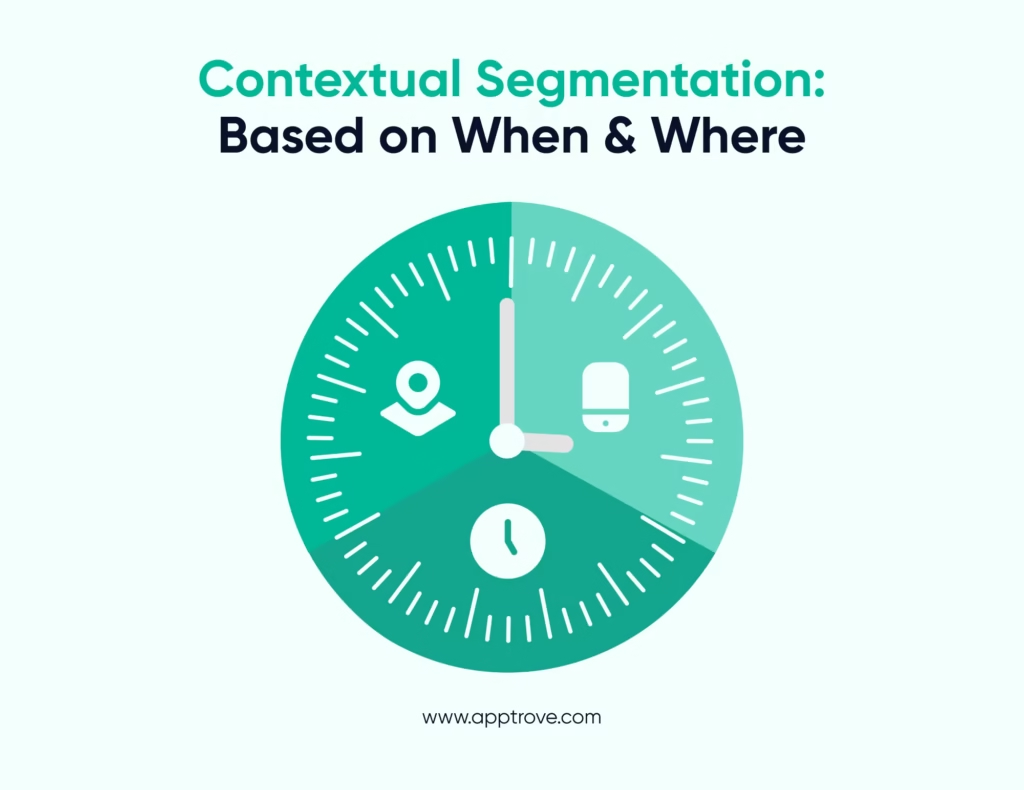
An Example Flow
As an example, let us consider an e-commerce brand. Suppose the identification of a section of users who have not completed their checkout process after adding a product to their cart. The segment activates a customized creative ad that displays the specific product they left behind, as well as a time-sensitive offer. The advertisement is dynamically compiled with Dynamic Creative Optimization, such that every customer sees the product that they are interested in. When the performance data is available in i.e., what creative variations produce higher conversions, you refine the segmentation and the creative assets. The resulting flow is a system in which all impressions are maximized in terms of engagement and conversion.
Segmentation, however, is not a part of the process; it is the basis of everything. It is the absence of which personalization would be unstructured, and DCO would no longer be able to reach audiences in a meaningful way. When you make segmentation a part of your campaigns, you open the door to the creation of performance creatives that will always bring about quantifiable outcomes.
What Makes an Ad Creative Work with Dynamic Creative Optimization?
When personalization is based on segmentation, ad creative is the canvas on which it is acted out. The most advanced data strategy can fail unless the creativity of the implementation reaches users. The impact of your ad creative is even more essential with Dynamic Creative Optimization (DCO), as this is a factor that introduces the aspect of segmentation and personalization to your audience.
The Fundamental Building Blocks of Ad Creative
There are three necessary layers of an advertisement creative: graphics, text, and call-to-action (CTA).
- The initial impression is the visual. They may be pictures, videos or even interactive components. Under Dynamic Creative Optimization, the visuals do not have to be one-size-fits-all but could be dynamically replaced depending on the audience’s preferences. One example is that a travel app might display images of the beach to a segment of the audience and mountain scenery to another, as a result of the reputation of browsing.
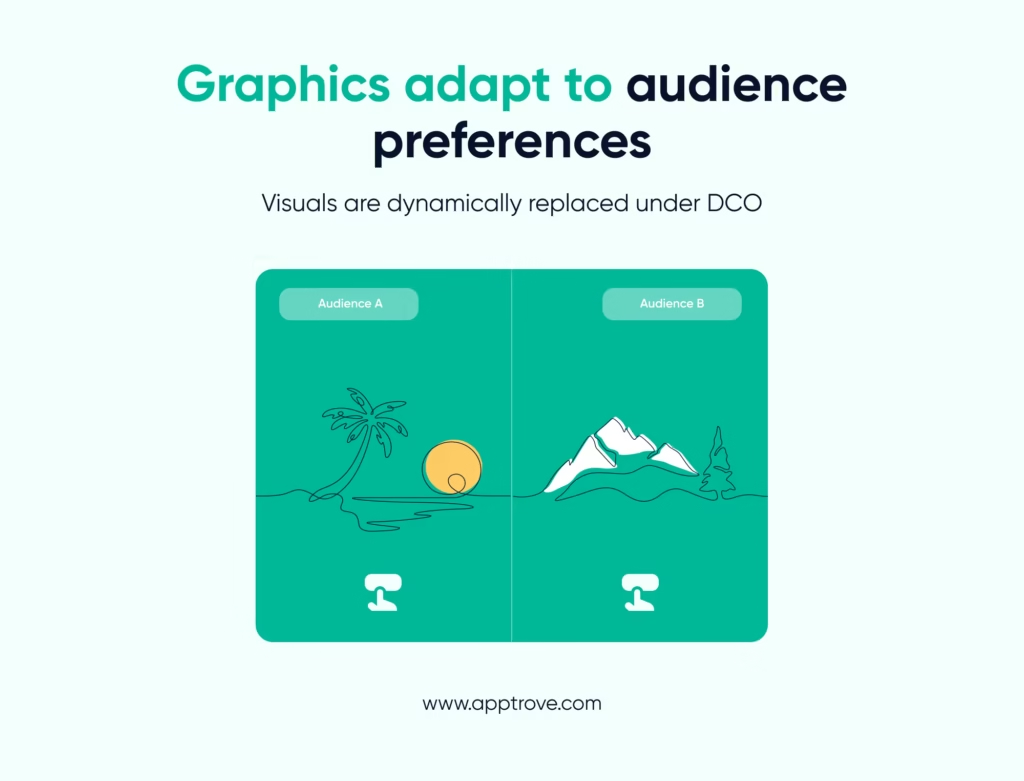
- Messaging will give a voice to the ad. Copy should be brief, easy to understand and pertinent. Dynamic Creative Optimization enables messages to be customized en masse, like providing a first-time customer with a discount on their first purchase and letting a repeat customer see that they have a reward awaiting them.
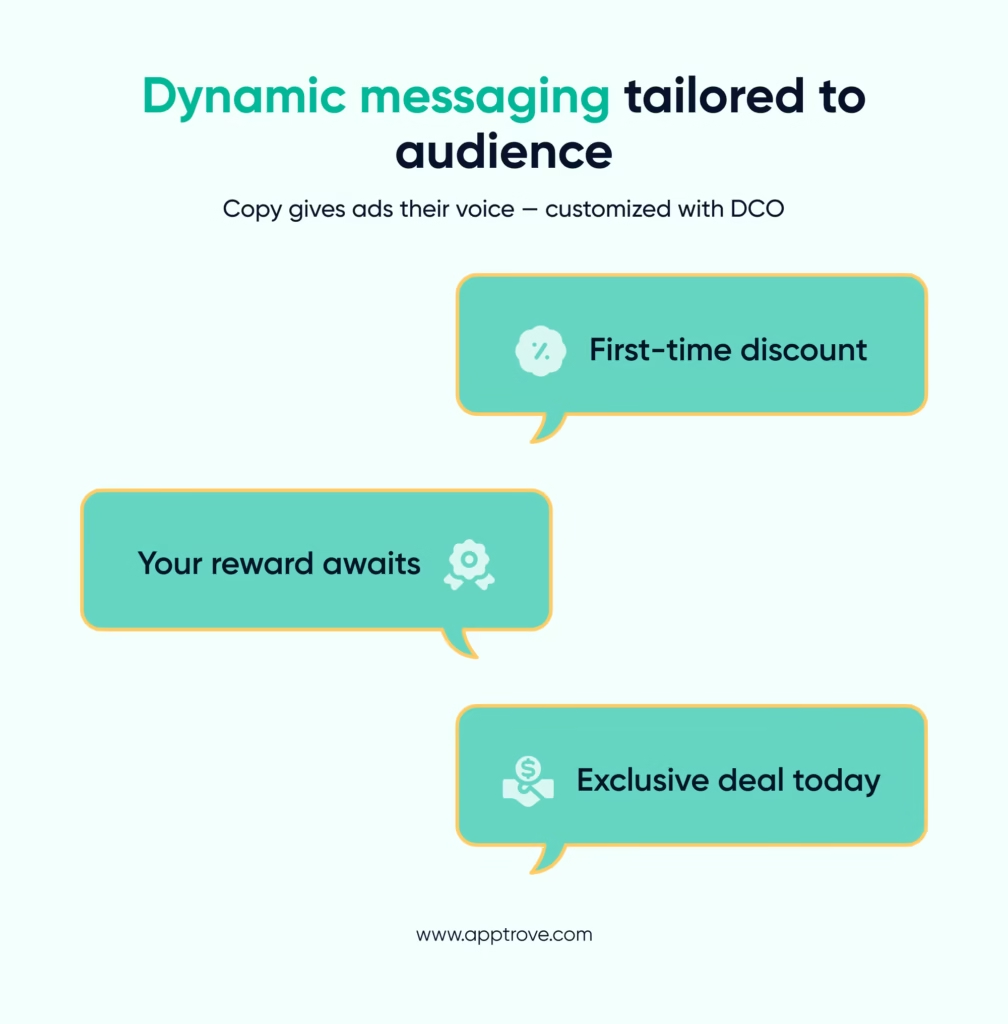
- CTAs become the place of engagement into action. An abstract Learn More will not be as useful as booking your flight today or resuming checkout. Dynamic Creative Optimization makes sure that the CTAs are not just personalized, but that they are also experimented with in real-time with the various audience groups to determine which prompt is the most effective.
These aspects are jointly referred to as the foundation of ad creative. Their strength in DCO is that they can be programmed to change according to the viewer of the ad.
Artificial Intelligence and Automation Creative Testing
In the past, marketers would design several variations of an ad and conduct A/B tests, trying to define the one that was working better. Although effective, this type of process is time-consuming and small-scale. Dynamic Creative Optimization will substitute this non-attentive strategy with AI-driven machine learning automation. You do not need to preselect a few variants of the ads, but rather upload a collection of creative materials, such as pictures, headlines, calls to action, etc., and the system is going to create thousands of potential variants in a matter of seconds and test them.
This automation will not allow any optimization opportunity to be wasted. The AI determines the creative combinations that are most effective for particular sections, and the versions are automatically put at the top of the list for delivery. It is the equivalent of a continuous testing laboratory being constructed in your campaigns, and your learning is on the go.
Real-Time Creative to Segments Matching
The real worth of Dynamic Creative Optimization is that it allows one to align ad creative with those audiences that are segments at the time that an impression is served. Think of a user on his or her phone during the evening after having searched for sneakers. DCO is able to provide an instant service to a creative of the specific kind they were looking at last, with an evening discount that has a time limit. A user in a different area will also view an ad of the same brand but with a localized language, with an offer that is oriented towards his/her location.
Such flexibility is what contributes to the difference between DCO and inert creatives. Each impression is a chance to do something different and not repeat the same message everywhere.
Example in Action
Consider seasonal campaigns. In summer, Dynamic Creative Optimization is able to automatically modify imagery, copy, and offer to give it a sense of a sunny vacation, whereas in winter, it shifts to warm indoor experiences or the theme of a holiday. On the same note, regional differences enable the same campaign to display a festive creative in one country and emphasize a back-to-school message in another one. On a smaller scale, behavior-driven messaging could notify a user that he or she forgot something in his or her cart with a personalized discount.
These examples, combined with segmentation and automation, make ad creative not only a lovely piece of output, but a moving performance instrument. In DCO, all aspects of creative are made to be relevant, engaging, and converting, thereby making your campaigns smarter and more valuable.
How to use Dynamic Creative Optimization in Your Campaigns
Dynamic Creative Optimization (DCO) is not just a matter of technology being injected into your campaigns but creating a system in which segmentation, data and creative effort all intermingle. In order to be successful in doing so, you must consider each step of the process in a manner that makes each aspect contribute to personalization at scale. We shall discuss the process of introducing DCO into your campaigns one step at a time.
The initial one is the preparation of your data. Segmentation is only effective when the information that drives it is trustworthy, clean and practical. Begin by defining the prime qualities that are important to your business: this may be user behavior, demographic details or contextual data such as location and type of device. As an example, the separation of the first-time customers and the loyal customers can be seen as a gateway to completely new creative approaches. Nevertheless, raw data is not sufficient; rather, what is important is consistency and accuracy among sources. In case your data is disjointed or old, then your Dynamic Creative Optimization system runs the risk of misfiring by sending the wrong message to the wrong audience. Consider data as the base of a house: when it is wobbly, the house above will not hold.
After you are certain that you have all the data, the next thing is to prepare your creative assets. This is where it comes in with flexibility. DCO has been successful in terms of having a range of creative elements to operate with, such as different images, videos, headlines, and calls-to-action. You are not supposed to create one polished creative, but you are expected to think of modular design. They are building blocks that can be used in unlimited ways through which the system combines each creative asset. As an illustration, a retailer might prepare product images, seasonal images, localized taglines and a list of urgently varying CTAs. This process is scalable with templates that enable swapping of assets quickly, such that the system is capable of dynamically assembling ads that nevertheless have the sense of being cohesive and brand-safe.
Having data and creativity prepared, the next thing is to launch and initiate testing. Dynamic Creative Optimization is based on continuous integration, unlike a traditional campaig,n where you can set up a small number of A/B tests. The system runs thousands of different combinations of creatives automatically and checks their performance within the various parts of the audience. This does not imply that you no longer play the role of a marketer, it just changes. You do not just process the rules manually and make decisions on which creative is the winner, but rather you control the process, polish the rules and interpret the insights. You will know what parts are reacting the best to some visuals or messages and can apply this information to your future campaigns.
This stage becomes your guide for performance data. Measures like engagement rates, conversions and return on ad spend all cause a feedback mechanism that enables the system to optimize further. It is this feedback loop that makes DCO so potent: the longer the loop in it the smarter the Dynamic Creative Optimization becomes. Not only are you enhancing a specific campaign, but you are also creating a learning engine that will evolve with the changing behavior of your audience. As McKinsey argues, a 10 to 30 percent efficiency increase in marketing expenditure and a 15 percent growth in sales can be achieved through personalization. These statistics underscore the importance of fine-tuning on the basis of the performance data.
Naturally, there is no easy fix to the issue of implementation as just a switch-on and walk-off. You will need to periodically re-examine your segmentation logic, update your creative assets so as to never get used to it, and make sure your data pipelines remain correct. DCO is a dynamic process, not a single arrangement. It not only works better than ad performance in the short-term when done with sound planning but also creates a long-term scheme of creative personalization that grows as your brand expands.
By harmonizing clean data, creative assets that can be made and optimized continuously, you provide your campaigns with the most significant opportunity to succeed. Dynamic Creative Optimization is not that complex, but more of an orchestration where all the components of the process collaborate to create ad experiences that are personal and impactful.
How to Measure the Effectiveness of Dynamic Creative Optimization
When you start running a Dynamic Creative Optimization (DCO) campaign, it is not the full battle until you start measuring whether your ads are working as intended. Since DCO relies on segmentation, automation and personalization, it will only succeed when it tracks the performance of the broad campaign, as well as how certain creative variations perform with various groups of audience. It is the measurement that makes DCO a marketing experiment and an effective growth strategy.
The Metrics That Matter
The center stage of Dynamic Creative Optimization success metrics is the Click-Through Rate (CTR), Conversion Rate (CVR), Engagement Rate and Return on Ad Spend (ROAS).
CTR demonstrates the attractiveness of your creative that is able to cause users to take action. A good CTR is normally an indicator of a strong right message that is reaching the right audience. CVR, however, goes further into the number of those clicks that are converted to a conversion- a purchase, app install or subscription. The metrics of engagement, like the time spent interacting with an ad or video completion rates, provide an extra dimension, showing that the creative is not only relevant to the initial impression. Lastly, ROAS leads us back to efficiency: every dollar of expenditure generates how much revenue? Collectively, these metrics would provide a complete picture of your performance in achieving results.
Why Attribution Accuracy Matters?
Naturally, it is as good as what is attributed to measuring success. Having several creatives being served dynamically, it is sometimes hard to identify which version actually influenced a user to make a choice. This is the reason why proper attribution is critical in Dynamic Creative Optimization campaigns. Not only did a conversion occur, but which of the creative elements–and consequently which part– had the greatest part to play. In the absence of this clarity, the optimization would be a guess. The accuracy in attributions makes sure that what you are getting back is more creative and smarter segmentation.
Bringing Insight Segmentation Back to Optimization
The feedback loop of Dynamic Creative Optimization is one of its strongest sides. Each impression, click and conversion contributes to your knowledge of the reaction of various audience groups to various artistic combinations. To give an example, younger audiences may turn out to be more interested in video type, whereas older audiences prefer to use an image with clear CTAs. Or you might discover that location-based messaging will be more likely to result in a high conversion rate in the city than in the countryside. These insights will enable you to optimize your creative assets as well as your segmentation strategy, which will give you a cycle of improving your campaigns as time goes on.
Challenges to Watch Out For
The potential of Dynamic Creative Optimization is enormous, and pitfalls that should be countered can be revealed by measurement. Over-segmentation, or dividing the audiences into so many tiny groups that the system has a hard time accumulating meaningful performance data, is also one of the challenges. The other one is creative fatigue, when even the dynamic ads become unproductive when the assets are not updated frequently. Then there is the problem of discipline testing. DCO makes much of the testing process automatic, and it is tempting to just leave it and forget it. However, unless you watch it carefully and make intelligent changes, you will find that the system will be optimizing in the short term to the detriment of the long-term brand value.
With a keen watch on these obstacles and an emphasis on the correct metrics, you will be certain that DCO will fulfill its promise. It is not only about successfully serving ads dynamically in DCO, but it is also about demonstrating that such ads are generating engagement, conversions, and returning to spend in a way that is measurable and repeatable. The period of correct attribution and standing feedback between segmentation and creativity will make your campaigns not merely good but even outstanding, performing consistently, and compounding with time.
The Future of Dynamic Creative Optimization and Segmentation: Where Performance Creative is Going
Dynamic Creative Optimization (DCO) has already transformed the nature of the way marketers tackle personalization, yet it is not the end of the story. DCO and segmentation are about to be even more potent as technology is getting more advanced and the demands of users change. Three key trends that are influencing the future of performance creative are AI-controlled segmentation, privacy-oriented personalization, and context-based targeting.
AI-Driven Segmentation
Segmentation is becoming more and more reliant upon artificial intelligence. Rather than creating audience groups that are broadly defined based on general assumptions, AI systems can process large data sets and reveal patterns that may be missed by humans. These understandings can be used to micro-segment, dividing the audiences not based only on the demographics and behaviour, but on subtle cues such as intent-to-browse or intention-to-engage at specific times or even to predictive conversion probability. To you as a marketer, this implies that you can do hyper-targeting of your Dynamic Creative Optimization campaigns and still scale. The AI also makes sure that the creative is better aligned to the users, increasing the efficiency and effectiveness.
Privacy-First Personalization
Meanwhile, the privacy issue and regulation concerns are raising concerns about the future of personalization. Users desire personalized experiences, and they need to find out how their data is used as well. This has been pushing creators of marketing to develop new methods of personalizing without using intrusive tracking. The contextual signaling, such as the type of device, time of the day or the consumed content, is turning into an important input to DCO. With privacy-first solutions, you are able to keep providing the relevant creatives without interfering with the trust that users have, a concept that will become increasingly critical in the next several years.
Contextual Targeting and Creative Automation
Contextual targeting is synonymous with creative scale automation. Dynamic Creative Optimization is already dynamically assembling ad creatives; however, the future is in real-time flexibility driven by contextual awareness. Think of the campaigns where creative works can be automatically updated in accordance with the current events, the popular topics, or even with the weather. A retail advertisement might even change to the sale of raincoats and to the sale of sunglasses in the same area in a few hours without the need to change it manually. This automation not only benefits efficiency, but it also makes sure that your creative does not lose its relevance, timeliness, and interest, regardless of the speed of the changes in the conditions.
Being Ahead with Segmentation + Dynamic Creative Optimization
The future of marketing is a place where segmentation is smarter, personalization is privacy-conscious and creativity is automated, and marketers who adopt this future will remain at the leading edge of the curve. DCO is not merely a campaign optimization tool, but it is emerging as a key performance marketing strategy. With constant improvements in segments, respecting privacy, and scaling creative automation, you will be placed to fulfill user expectations in the most precise and agile way.
The following phase of performance creative will be the one that will not be characterized by more ads, but by the smarter ones. Having segmentation as the base and DCO as the fuel, you will be prepared to move in a landscape where relevance, trust and adaptability are the real success drivers.
The Conclusion: Segmentation- Making Ad Creative Smarter with Dynamic Creative Optimization
One of the lessons that can be learnt about the development of advertising is that personalization is no longer optional but rather expected. And in the midst of it is segmentation. Even a polished creative would not work without the knowledge of the audience and their behaviours. Segmentation gives it the framework. It enables you to target your audience as not a single giant herd, but groups of individuals with common needs, purposes, or situations.
This is followed by the dynamic Creative Optimization (DCO) that comes to the rescue to operationalize segmentation. Instead of using the traditional approach of treating all users as one and the same, DCO uses dynamic creatives that are assembled in real time to meet the needs of each segment. It is not simply a question of efficiency, but rather about providing relevance on scale. In combination with segmentation and DCO, they make performance creative a strong growth engine.
The formula is very simple and easy to grasp: segmentation is the key, DCO is the enabling factor and ad creative is the product. Segmentation can make sure that you are talking to the right people. Dynamic Creative Optimization makes sure your message is adjusted to when and how you were talking to them. And ad creative–optimized, tested, and scaled–are making sure you are delivering the right experience to be able to earn the clicks, conversions, and loyalty.
With the digital advertising environment becoming increasingly competitive, creativity will be applied to the brands that succeed in the market as a dynamic system that operates on insights rather than as a one-off asset. Intelligence in ad creative is not that it should be better designed or catchier written but that it should be a feedback mechanism whereby data influences how creative decisions are made and that creative performance influences future data decisions.
This is how we see it in Apptrove as the future of performance marketing. We have solutions that will make your ads work harder, smarter, and with better results- unlocking the full potential of segmentation, automation and creative optimization.
Are you willing to visualize how your campaigns can be transformed using segmentation and Dynamic Creative Optimization? Take a look at Apptrove’s resources, or reach out to our team to discover how intelligent ad creative could become your most significant performance edge.
